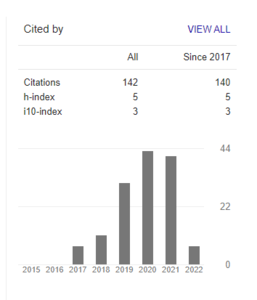International Conference on Food Science and Bioprocess Technology
November 20-22, 2017 Dubai, UAE
Physiochemical and Sensory Properties of Yoghurt made by Culturing Milk from Different Dairy Producers; Buffalypso, Goat and Cow
University of Trinidad and Tobago, West Indies
Physicochemical and sensory attributes of yoghurt produced from buffalypso, goat and cow milk were analyzed. Variation in compositional analysis of fresh milk was different in fat, SNF and lactose, fat was highest for goat milk while SNF and lactose were highest for buffalypso milk (P<0.05). Cow milk had the highest pH and all milks had similar decrease after culturing, the 3 yoghurts also had similar pH (P>0.05). Composition of three yoghurt types was different when compared to the fresh milk especially for protein, SNF and lactose (P<0.05). Viscosity was different for all three yoghurts (P<0.05), highest for cow and lowest for goat. No one of the 3 milk yoghurt was inferior with respect to overall acceptance (P>0.05) or for the four different attributes score on a scale from 1 to 5 (P>0.05).Using descriptive sensory analysis technique, common terms were developedas “goaty,” “creamy,” “fermented,” “cooked,” “sweet,”“salty,” “sour” and “astringent.” Yoghurts made by cow milk had weaker intensitiesof descriptive attributes including sweet, goaty, and sour than thatmade by goat and buffalypso milk. Goat yoghurt was least astringent and creamy and most fermented. However the intensity scores for the four attributes of appearance, aroma, texture and flavour and the hedonic rating for acceptability showed that no one of the 3 milk yoghurtswere inferior with respect to the four different attributes intensity score or for overall acceptance (P>0.05).
Key words: Buffalypso, goat, cow, attributes, yoghurt
Biography:
Dr. Maharaj has over twelve years of Industry experience in various capacities as Operations Director, Process Excellence Director, Compliance/Regulatory Director and Quality Assurance Manager prior to joining the University of Trinidad and Tobago (UTT). In 1993, she was awarded the Institute of Food Technologists George F. Stewart International Research Award for her work on the use of Ultraviolet radiation for preservation of horticultural crops. She has published in reputable journals in Food and Agriculture and in the areas of Postharvest Storage Technology of Caribbean crops such as Tomato, Banana, Papaya and Breadfruit.At UTT, she has been employed as an Associate Professor in the Biosciences, Agriculture and Food Technologies (BAFT) unit for the past eight years. She has led the launch of the new B.Sc. degree in Food Science and Technology along with Diploma and Certificate programmes in Food Technology. She has been Programme Leader for the past eight years, been responsible for curriculum development for these programmes including the design and commissioning of a food lab and industrial kitchen to conduct food quality and safety analyses in a variety of products.



